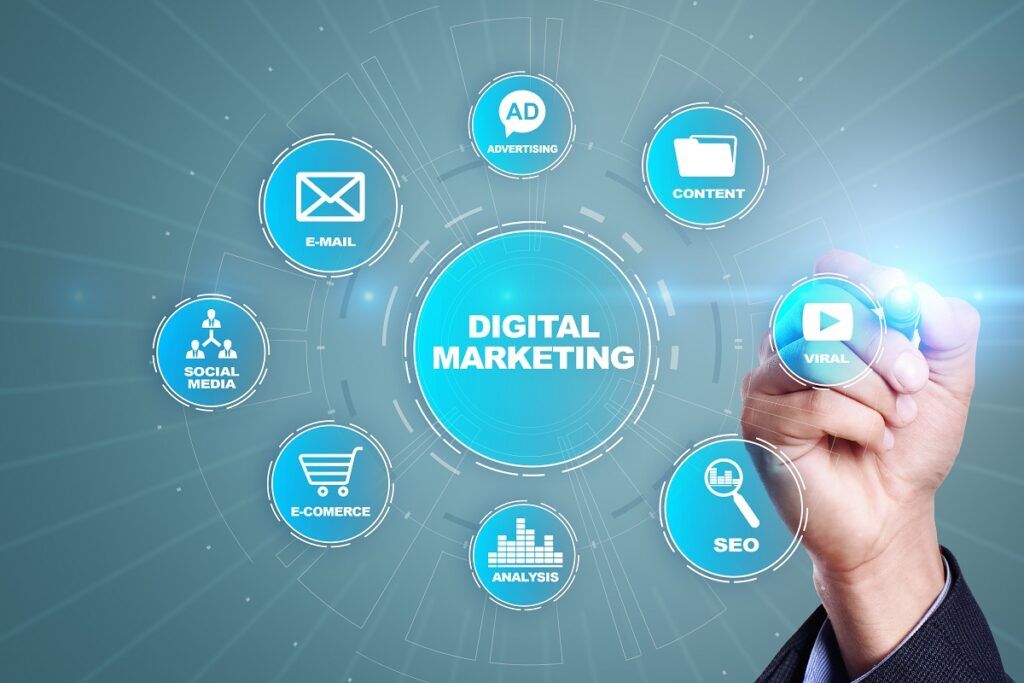
In the wild and wacky world of logo design, there are plenty of pitfalls just waiting to trip up even the savviest of designers. From font faux pas to color catastrophes, navigating the treacherous waters of logo creation can feel like a minefield of mistakes. But fear not, brave designer! With a little wit, a dash of wisdom, and a sprinkle of expert advice, you’ll be well-equipped to steer clear of those common logo design blunders and set sail towards success. So buckle up, grab your pencil, and get ready to embark on a daring journey through the land of logo design, where blunders are abundant but triumph is oh-so-sweet.
Choosing the Wrong Typeface for Your Brand Identity
So, you thought using Comic Sans for your brand identity was a brilliant idea, huh? Well, brace yourself for some hard truths, my friend. Choosing the wrong typeface can make or break your brand’s image faster than you can say “Papyrus.”
Let’s face it, using a typeface that doesn’t suit your brand can be a disaster waiting to happen. Imagine trying to establish a sense of professionalism and credibility with a typeface that looks like it belongs on a kindergarten sign-up sheet. It’s a recipe for branding disaster!
Here are a few reasons why choosing the wrong typeface can be detrimental to your brand identity:
- Lack of Legibility: Your audience shouldn’t have to squint and decipher what your brand name actually says. Choose a typeface that is easy to read.
- Inconsistent Messaging: Mixing and matching typefaces can confuse your audience and dilute your brand’s message. Keep it cohesive!
- Unprofessional Image: Using a typeface that looks unpolished or childish can give off the impression that your brand lacks seriousness and credibility.
In conclusion, when it comes to choosing a typeface for your brand identity, don’t just settle for the first font that catches your eye. Take the time to consider how it aligns with your brand’s values and messaging. Your audience will thank you for it!

Overcomplicating Your Logo Design
Do you find yourself spending hours agonizing over every tiny detail of your logo design? Are you adding unnecessary elements that only serve to confuse rather than enhance your brand identity? Well, my friend, you may be .
Here are a few signs that you might be guilty of overcomplicating your logo:
- Your logo features more than three different colors, eight different fonts, and a partridge in a pear tree.
- Your logo looks like a Rube Goldberg machine – unnecessarily complex and overly convoluted.
- Your logo requires a 10-page manual just to explain its symbolism and hidden meanings.
Remember, the best logos are often the simplest ones. Think of iconic brands like Nike, Apple, and McDonald’s – their logos are clean, straightforward, and instantly recognizable. So take a step back, simplify your design, and let your brand speak for itself with a bold, memorable logo that doesn’t need a magnifying glass to decipher.

Ignoring Scalability and Versatility
When it comes to developing a product, it’s easy to get caught up in the excitement of bringing your vision to life. However, in your design can lead to some pretty hilarious mishaps along the way.
Imagine launching your brand-new app to the world, only to realize that it can’t handle more than ten users at a time. Cue the virtual tumbleweeds rolling through your server room as potential customers move on to more robust platforms.
And let’s not forget about versatility – the ability for your product to adapt and grow with the ever-changing demands of your audience. Sure, your chatbot may be able to order a pizza like a pro, but what happens when customers start requesting sushi or tacos? It’s all fun and games until your AI assistant goes on strike in protest of its limited skill set.
So, dear developers, remember: scalability and versatility are not just fancy buzzwords. They are the secret ingredients that will help your product thrive in a world where innovation reigns supreme. Don’t let your vision be squashed by a lack of foresight – embrace the power of thinking big and thinking ahead.

Copying Trends Instead of Establishing Your Own Identity
Do you ever feel like your personal style is being overshadowed by the latest trends? Are you tired of blending in with the crowd instead of standing out on your own? It’s time to break free from the cycle of copying trends and start establishing your own unique identity.
When you copy trends, you’re essentially becoming a fashion clone. Sure, it might be fun to dress like everyone else for a while, but where’s the originality in that? Stand out from the crowd and make a statement with your own sense of style.
It’s like when everyone started wearing those tiny sunglasses – suddenly everyone looked like they were trying out for a role in The Matrix. But if you dare to be different and rock a bold pair of oversized shades, you’ll be turning heads for all the right reasons.
So, let’s ditch the copycat mentality and embrace our individuality. Be the trendsetter, not the trend follower. Show the world what makes you unique and let your personal style shine through.

Lack of Research and Understanding of Target Audience
Picture this: you’re trying to sell ice to Eskimos. Sounds like a great business idea, right? Well, not really. This is a classic example of the lack of research and understanding of your target audience. You need to know who your audience is and what they want before you can successfully market to them.
When you don’t take the time to research your target audience, you end up wasting time and money on ineffective marketing strategies. It’s like throwing spaghetti at the wall and hoping it sticks. Spoiler alert: it won’t stick if your audience doesn’t even like spaghetti.
So, how do you avoid this common pitfall? Take the time to do your research. Find out who your audience is, what they like, where they hang out, and what makes them tick. Once you have this information, you can tailor your marketing efforts to resonate with your audience and increase your chances of success.
Remember, knowing your target audience is the key to successful marketing. Don’t make the mistake of trying to sell ice to Eskimos. Do your research, understand your audience, and watch your business thrive!
Neglecting the Importance of Color Psychology in Logo Design
When it comes to designing a logo, many people tend to overlook the importance of color psychology. But let me tell you, my friends, ignoring the power of color in your logo design is like trying to climb a mountain without a map – you’re bound to get lost.
Color is not just about making things look pretty. It plays a significant role in branding and marketing. The right colors can evoke emotions, create associations, and even drive action. So, why settle for a logo that doesn’t pack a punch?
Imagine a world where every logo was designed without considering the psychological impact of color. It would be a chaotic mess of mismatched hues and confused consumers. But fear not, dear readers, for we have the power to avoid such a disaster by embracing the magic of color psychology in logo design.
So, the next time you’re brainstorming ideas for your logo, don’t just pick your favorite colors or use random shades because they look good. Take a moment to think about what message you want to convey and which colors can help you achieve that. Trust me, your logo will thank you for it.
Inconsistency Across Branding Collateral
Have you ever noticed that the logo on your company’s website doesn’t quite match the one on your business cards? Or that the color scheme in your marketing emails is completely different from the one on your social media profiles? Welcome to the wonderful world of !
It’s like a game of brand identity bingo – except instead of matching numbers on a card, you’re trying to match logos, fonts, colors, and messaging on various pieces of marketing material. And just like in bingo, when you can’t find a match, things start to get a little chaotic.
Picture this: your potential customer receives a beautifully designed flyer in the mail with sleek graphics and a modern font. Excited, they head to your website to learn more, only to be greeted by a completely different logo, a mishmash of colors, and a font straight out of the 90s. Confusion sets in. Trust is lost. And just like that, you’ve lost a potential sale.
So, how do we fix this brand identity crisis? It’s simple, really. Consistency is key! Make sure all of your branding collateral - whether it’s a website, social media profile, business card, or email campaign – is visually cohesive. Use the same logo, color palette, fonts, and messaging across all platforms to create a seamless brand experience for your customers. Your brand will thank you. And who knows, maybe you’ll even win that brand identity bingo after all!
FAQs
What is the biggest mistake people make when designing a logo?
Oh, where do I start? One common mistake people make is overcomplicating their design. Keep it simple, folks. You want people to remember your logo, not wonder what on earth it’s trying to represent.
How important is color choice in logo design?
Color choice is crucial! You don’t want your logo looking like a rainbow explosion. Stick to a few colors that complement each other and reflect your brand’s personality. Plus, avoid using neon colors unless you want your logo to be mistaken for a rave party advertisement.
Should I use trendy fonts or stick to classic ones for my logo?
Avoid hopping on the trendy font bandwagon. Sure, that funky font might be all the rage now, but will it still be cool in a year? Stick to classic fonts that stand the test of time. Remember, Comic Sans was once considered trendy too. Need I say more?
Is it important to consider scalability when designing a logo?
Absolutely! Your logo should look just as sharp on a billboard as it does on a business card. If your design loses its charm when scaled up or down, you might need to go back to the drawing board. Nobody wants a pixelated mess representing their brand.
How do I know when my logo design is truly ”finished”?
When your gut tells you it’s done, it’s done. But don’t ignore feedback from others, especially if they’re screaming in horror at your creation. Remember, the goal is to make a logo that represents your brand in the best light possible, not to create something that gives people nightmares.
Avoid These Pitfalls and Logo On to Success!
So there you have it, folks. Remember these expert tips to steer clear of common logo design mistakes and create a masterpiece instead. Don’t let your logo be a laughing stock – after all, you want it to be iconic, not ironic. So put on your designer hat, roll up your sleeves, and get ready to dazzle the world with your awesome logo creation skills. Logo forth and conquer!











